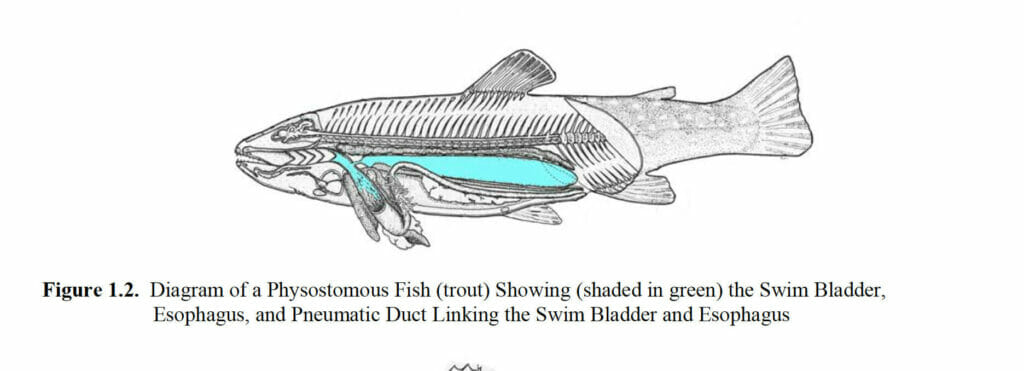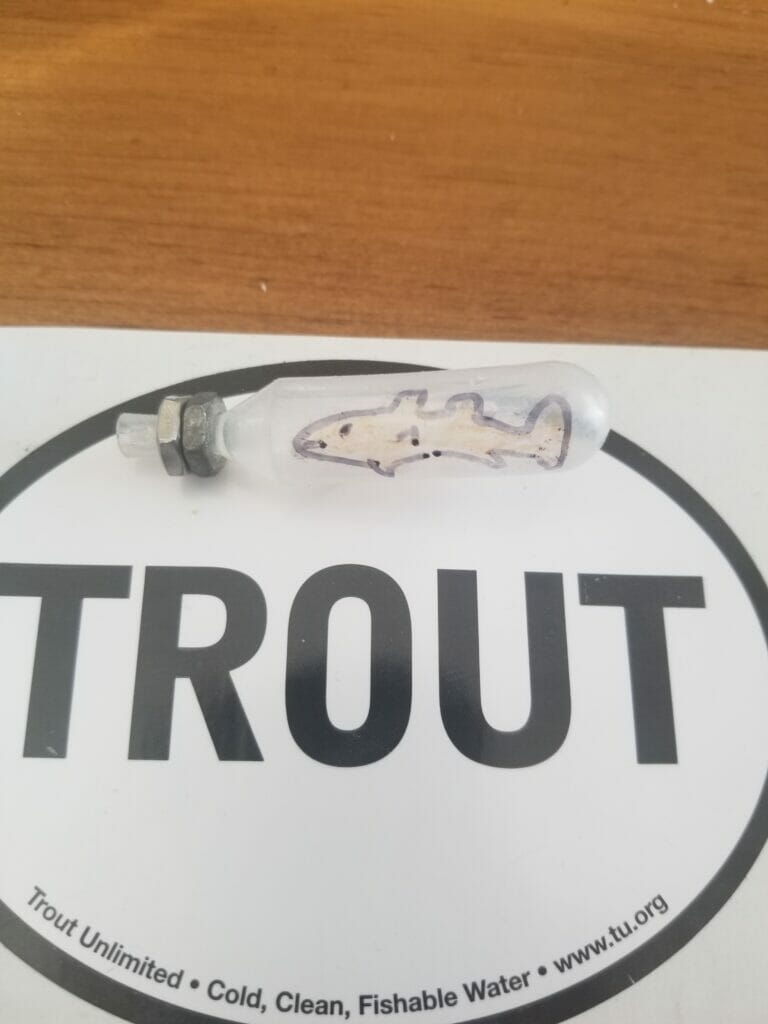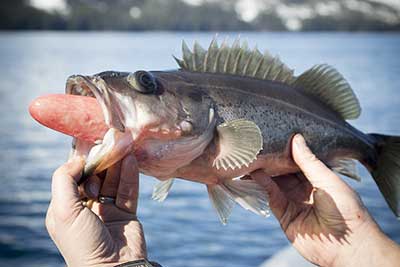
The Think Tank brookies are swimming up, a good sign that they are ready to eat. We can see how effortlessly they swim up and down in the tank and nest basket. Trout, like many other species of fish rely on their swim bladder to control buoyancy. Using the swim bladder to ascend or descend in the water is an adaptation that helps trout conserve energy.
Students can think of a swim bladder as being like a balloon that can be inflated and deflated. Trout are physostomes, meaning they have a swim bladder connected to their digestive tract. This lets them fill and empty their swim bladder via their mouths. Alternatively, physoclistous fishes have swim bladders that are not connected to the digestive tract and these fish diffuse gas from the blood to fill or empty the air.

Perhaps you have gone deep sea fishing or seen photos of fish like bass or rockfish with, what looks like, their stomach “exploding” out of their mouth. The organ that can be seen protruding out of the fish is actually the swim bladder that had suffered barotrauma, or rapid change in pressure inside the fish’s body. Luckily, trout can quickly “burp” the air, mostly oxygen, out from their swim bladder to avoid this type of trauma.
The swim bladder has other advantages as well. The location in the dorsal part of the trout’s body helps to distribute the mass and keeps the fish upright. It can also produce or receive sound, and in very primitive fish the swim bladder functions as a lung.
You can learn more about the fascinating internal anatomy of a trout on our Trout in the Classroom Website.
Science Journal Question for TIC Students: Why does a balloon float on the water surface when it is filled with air or sink when it is filled with water? How do trout get air into their swim bladder while they are underwater?
Hands-on STEM for P-8: Float your swim bladder Fill a small balloon with air and drop it in a tub of water. What happens? Try attaching weights to make it sink and then to achieve neutral buoyancy.
Dive even deeper: What might be adaptive advantages and/or disadvantages of physostomous versus physoclistous swim bladders in various fishes? How and why do deep sea fishes suffer barotrauma?
Hands-on STEM for 6-12: Cartesian Diver Buoyancy You can build your own Cartesian Diver using 3 simple items: 1) the top portion of plastic pipette or an eye dropped 2) metal nuts to attach around the opening of the pipette 3) plastic water bottle filled up to the very top (also possible to use a sealed soy sauce packet in a water bottle!)

After drawing up water into the pipette (filled only ¼ of the way), drop the Cartesian diver into the water bottle and cap it tightly. Squeezing the bottle will allow you to observe Pascal’s law, Archimedes’ principle, and the ideal gas law.
Lillith Genovosi is the New York City and Watersheds Trout in the Classroom Coordinator for Trout Unlimited.



